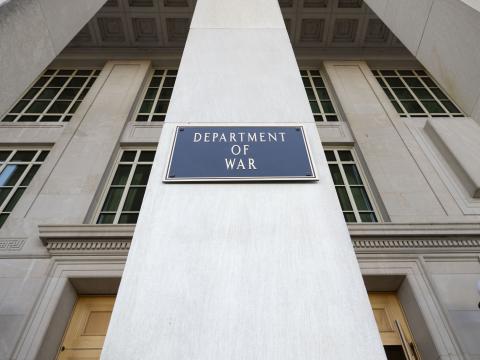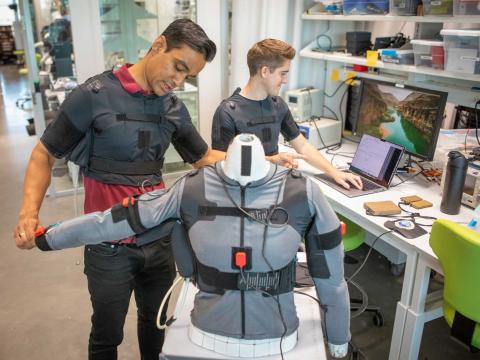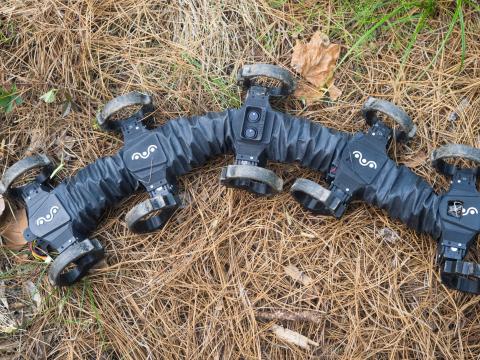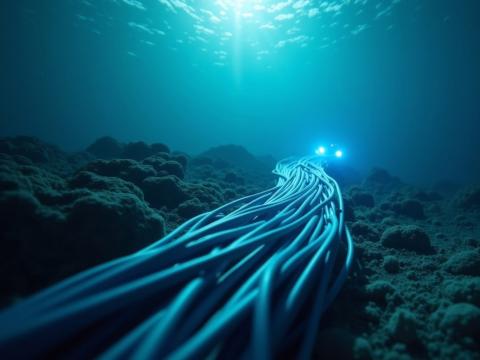Indo-Pacific Command Takes on Generative AI
The rapid evolution of artificial intelligence (AI) capabilities has forced the U.S. military into agile adaptability. For the Indo-Pacific theater, J6 leaders discussed swift and necessary changes taking place across the command.
“How are we keeping up? So, we’re not,” said Col. Alton J. Johnson, USA, in his answer to an audience question regarding the pace of generative AI. “Technology is moving at a pace that we can’t keep up with, but the INDOPACOM headquarters is making strides to attempt to keep up, which is a victory in itself.”
Johnson, who currently serves as the assistant chief of staff, G-6, for U.S. Army Pacific, was speaking at the annual TechNet Indo-Pacific conference held in Honolulu, Hawaii. He was joined on stage by seven fellow Indo-Pacific Command J6 panelists, along with moderator Brig. Gen. Michael L. Smith.
“The Army is a humongous service,” Johnson continued. “If you attempt to outfit the entire service with a new technology, it will take years, and by the time it’s deployed, it will not be one cycle, but two to three cycles behind.”
Therefore, Johnson explained, the Army has been updating its units as new capabilities become available. Though the approach may create a lack of uniformity across the Army, he said, it still ensures access to the most up-to-date kit for someone within the branch. “If something new comes out a week, two weeks later, we’ll start planning to give that to another part of that unit.”
Currently, the 25th unit is the most advanced yet fractured one, Johnson said, “because different brigades have different versions of the same kit, because the newest unit got the newest kit.”
While this used to be viewed as a fault, it is now seen as an opportunity.
“Now, we’re embracing it. We're accepting the fact that you don’t have to all look exactly alike to be successful, and it allows us to upgrade and keep up and implement new things as quickly as possible to make sure that we’re getting the best and the brightest into the formation,” Johnson shared.
According to Col. Toby Hlad, who recently assumed command of Defense Information Systems Agency (DISA) Pacific, the Indo-Pacific Command is an AI-enabled theater. “Keeping pace with different models [and] updates is hard ... but, hard is authorized; it’s what we do,” he said.
“The innovation and learning from a DISA perspective and a DISA Pac perspective, on delivery, is keeping track with industry standards and really the requirements of these folks up here,” Hlad said, referring to his fellow panelists. Quarterly updates are helping advance delivery, he noted, which is part of rapid integration.
A more important aspect of AI integration is data, however. “That’s what we need help, the data normalization, standardization, so we can go fast with AI,” Hlad stated, while also pushing to get rid of tech debt.
“We have a Defense Innovation Unit (DIU) assigned to our headquarters, which is really the entry point for all AI technologies,” Smith added. He currently serves as director for command, control, communications, computers and cyber, J6, for U.S. Indo-Pacific Command.
Being part of the DIU registry means giving Indo-Pacific Command headquarters direct access to industry capability information. “Anytime we come across that gap or challenge as we build our joint warfighting functions, data flows and our broader AI platform at the headquarters, we will call upon industry that’s registered in the DIU registry,” Smith explained. “They can also help support and fund small startup initiatives.”
At Pacific Air Forces, the command has stood up a chief data and AI office, said Col. Tassika Davis, deputy director of cyber operations and warfighter communications at Pacific Air Forces.
“Over the last year, they have built out a strategy vision for our entire command, and that included building connective tissue with all of the other AI officers across the entire [area of responsibility], and they have really taken that in stride,” Davis said.
Additionally, the command has identified a data steward per directorate, which meets regularly to discuss requirements and ensure early integration of new AI capabilities.
Part of AI integration is education, added Brig. Gen. Ray Phariss, commanding general at the 311th Signal Command, USA.
Senior leaders across the department are being encouraged to partake in further AI training, he said, which helps in creating climates that promote and reward innovation and learning.
“With respect to AI, this is an area where you really don’t want to rush to failure on it, and you have to understand what you’re doing before you start, before you get too carried away with it,” Phariss said. “It’s an area where if you ask the wrong question, you’re going to get the wrong answer, or even if you ask a great question to a model that doesn’t have the right data set, you might not get the answer you’re looking for.”
Echoing Hlad’s statements, Phariss emphasized the criticality of data sets. “I think that instead of focusing on the tools, focus on the most complex challenges you have, ideally the ones that require a lot of input, different data sources and a lot of analysis. And the better you can describe those challenges, then those might be your candidates to apply AI to [help] you solve those,” he said.
In ensuring AI security from adversarial threats, the speakers noted steps being taken across the theater.
“We are looking at more advanced technologies and sometimes looking back to technologies that may have been overlooked,” Smith told the audience. “One technology that we’re all starting to take a look at is blockchaining, and that’s a different way to secure data and networks, to ensure proof of life, proof of work, to ensure that ledger affirmation of the data.”
The command is also looking for ways to leverage quantum computing to better secure data and networks, Smith added.
“From a general perspective,” Capt. Victor T. Taylor said, “the models-based system engineering approach, that applies to the interoperable systems and networks that we’re connecting together to make sure that we know where the actual key terrain is, and shoring up that key terrain.”
Taylor is currently director of communications and information systems, N6, at Pacific Fleet, U.S. Navy.
“There’s been a lot of focus on global transport and ensuring our ability for [continued] access for assured [command and control],” Taylor added. “We still need to focus on the last mile.”
Issues could stem from power-related or HVAC complications, he noted. “It could be something that you’re not even really thinking about while you’re thinking about the global aspect. I’ll often take a step back and take a look at where we are potentially vulnerable in the last mile, and ensuring that we're doing those, because no matter what you install, no matter how good that system is, if you're not good, whether global transport or global architecture, if you're not good on that last mile either, then we have some shoring up to do.”
With a growing interest in AI technologies, Phariss also mentioned the secure CamoGPT platform created for service members to learn the tools without being compromised. The platform debuted in 2024.
“There’s a recognition at the high levels that we need to make these technologies available, both for learning and for use, and CamoGPT is just one of many,” Phariss said. Deliberate steps are being taken to protect the data sets, he noted.
Capt. Oscar Simmons, assistant chief of staff, J6, U.S. Forces Japan, turned to the audience and asked, “How are you going to help us secure [AI]?”
TechNet Indo-Pacific is organized by AFCEA International and AFCEA Hawaii. SIGNAL Media is the official media of AFCEA International.




Comments